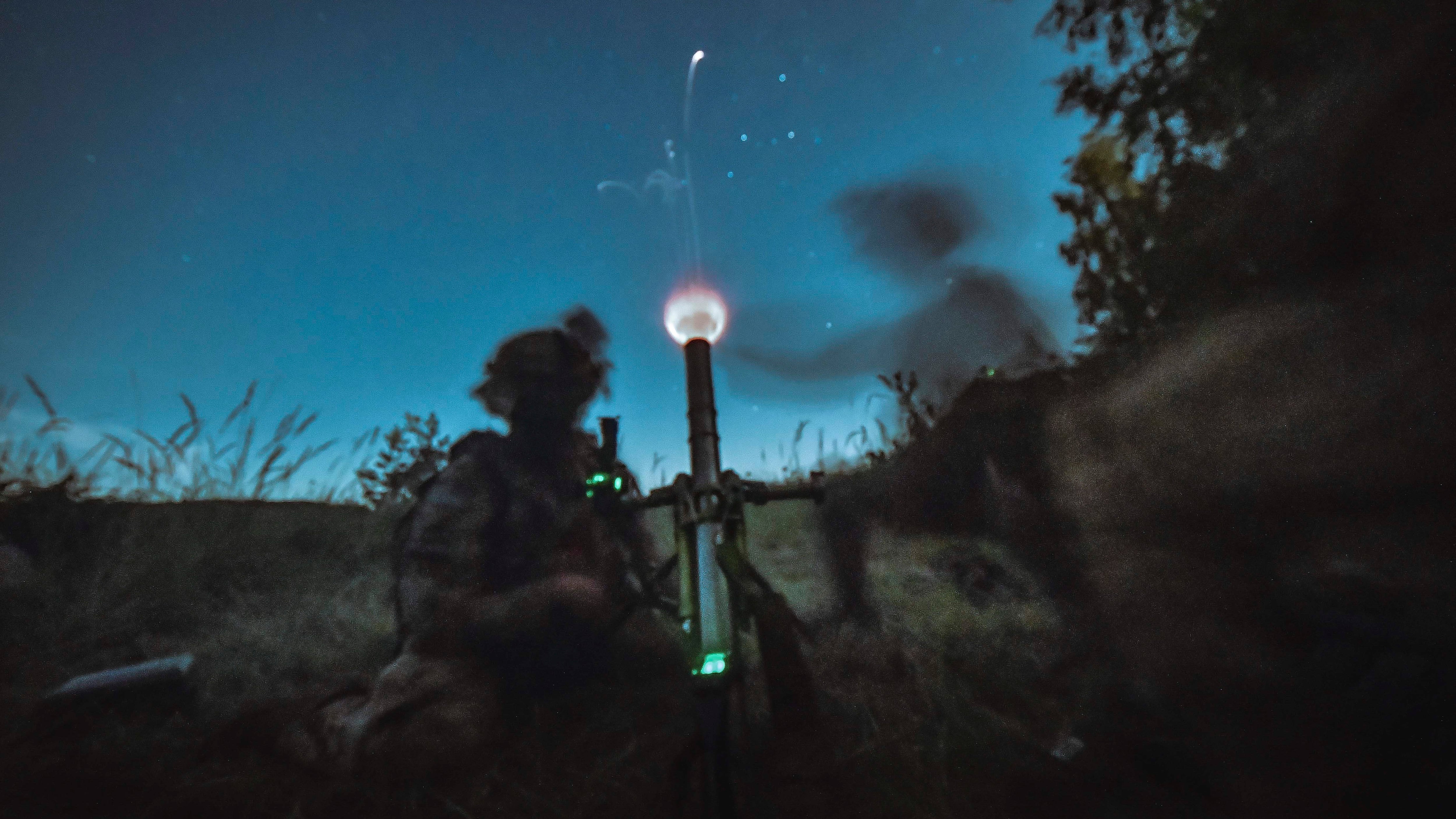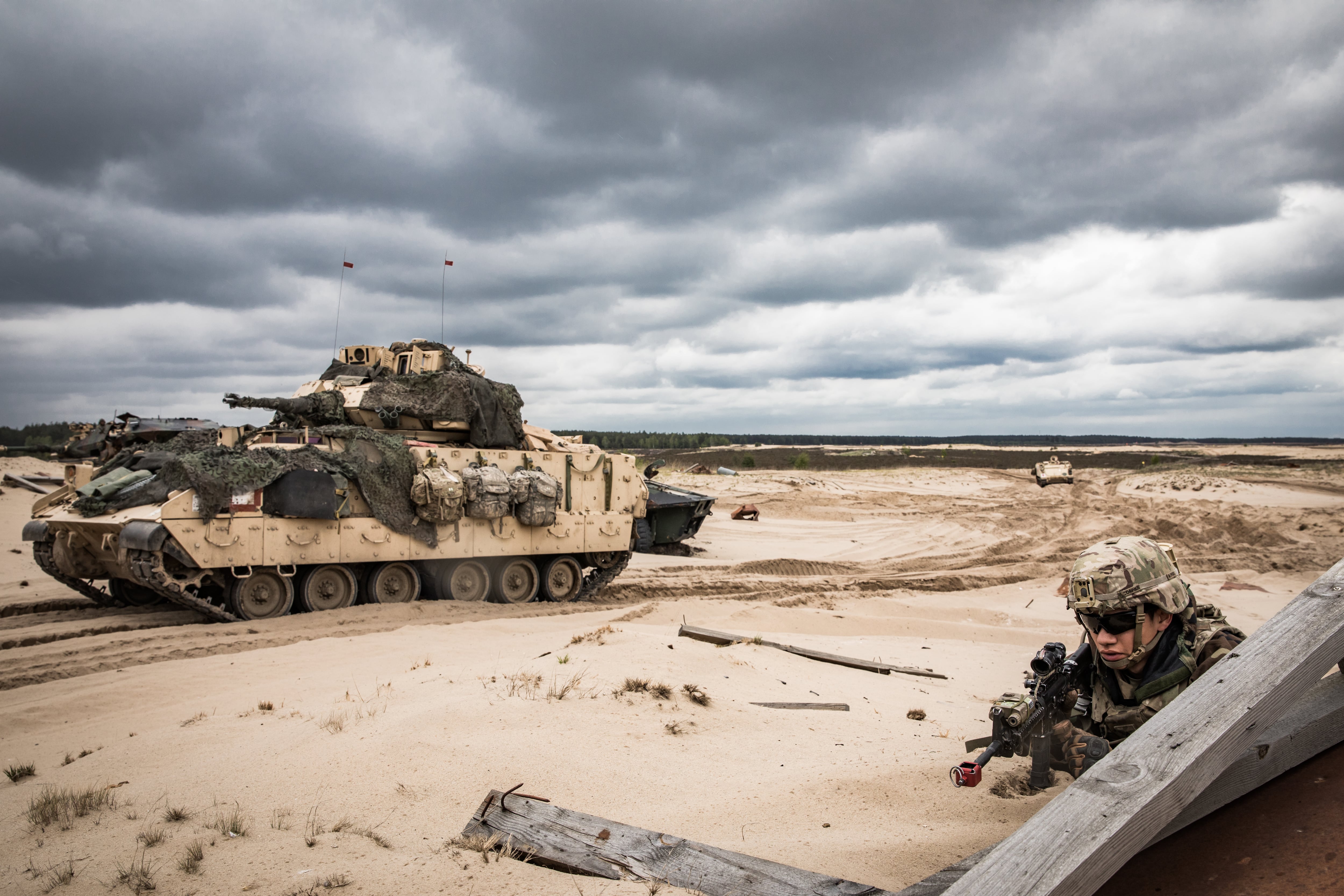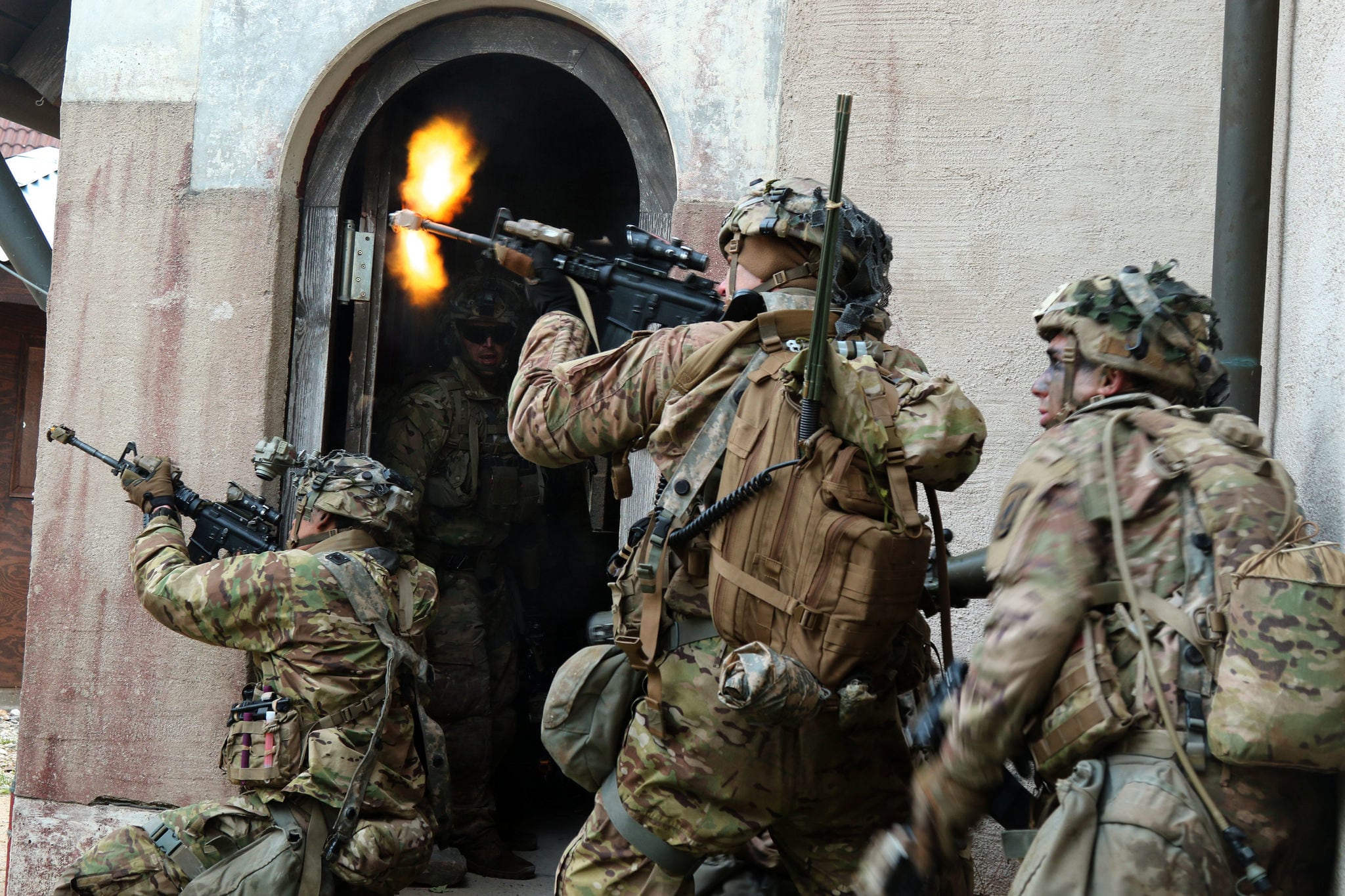The upcoming Defender 2020 exercise will involve about 20,000 U.S. soldiers deploying from the continental United States to support activities across 10 European countries.
The force deploying from the U.S. mainland will be the equivalent of a heavy division, according to Brig. Gen. Sean Bernabe, G-3 for U.S. Army Europe.
The major participating units include soldiers from the 1st Cavalry Division, 1st Armored Division, 1st Infantry Division, 3rd Infantry Division and 82nd Airborne Division, according to a slide presented at the Association of the U.S. Army annual gathering Tuesday.
“The 1st Cavalry Division will serve as the primary training audience for both a command post exercise and a live wet-gap crossing taking place in Drawsko Pomorskie Training Area in northwestern Poland,” Bernabe said at the panel on Defender 2020. “The 82nd Airborne Division will provide the command and control for three joint forcible entries.”
The division-size element will depart from seaports in Charleston, South Carolina; Savannah, Georgia; and both Beaumont and Port Arthur, Texas.
U.S. soldiers and equipment will land at airports across Europe and seaports in Antwerp, Belgium; Vlissingen, Netherlands; Bremerhaven, Germany and Paldiski, Estonia. From there, heavy equipment, including about 480 tracked vehicles, will be moved by rail. Soldiers will convoy across the continent and move by bus.

Also, 14 sets of M1A2 Abrams tanks will ship in with new Trophy active defense systems, Bernabe said. Feedback from using those new systems will help the Army field it to more units.
The 116th Armored Brigade Combat Team, from the Idaho Army National Guard, will draw from pre-positioned stocks rather than bring equipment with them, testing the Army’s ability to equip units rapidly on the continent if needed.
“We will be doing this on the clock,” Bernabe said. “Our goal is 96 hours to issue all the equipment to the armored brigade combat team.”
The 116th ABCT will then head to combined armed maneuvers training in northern Germany.
Once on the continent, soldiers will be joining with allied nations to conduct both simulated and live training exercises across Germany, Poland and the Baltic states.
“Defender is really the U.S. effort to deliver this force to the continent and then we spread it out to a variety of different NATO exercises and U.S.-led local exercises,” said Army Europe commander Lt. Gen. Christopher G. Cavoli on Tuesday.
About 9,000 U.S. troops stationed in Europe will also be participating, as well as 8,000 European troops, bringing the total participants to 37,000.
For instance, from the 82nd Airborne Division’s command node near Ramstein Air Base, Germany, Americans will oversee a multinational parachute jump into Georgia, a drop involving the 6th Polish Airborne Brigade into Lithuania with 82nd paratroopers, and a 173rd Airborne Brigade jump into Latvia with Spanish and Italian paratroopers.

The scenario for the division-level command post exercise will be centered in Grafenwoehr, Germany, but will be split across other European headquarters as well.
“It features a fictional near-peer competitor and actually puts that competitor on European terrain to allow us to get some good repetitions in large-scale ground combat,” Bernabe said. “The scenario will be set in a post-Article V environment ... and it’s actually going to be set in the year 2028.”
The Army’s Joint Modernization Command will help implement futuristic concepts, like multi-domain doctrine and proposed organizational designs.
“We’ll take those for a test drive in simulation as part of this command post exercise,” Bernabe added.
The river crossing in Poland will be done by the 2nd Brigade Combat Team, 3rd Infantry Division, the 2nd Brigade Combat Team, 1st Armored Division, and elements of Poland’s 12th Mechanized Division.
The Mississippi National Guard’s 168th Engineer Brigade will provide the mobility capability for the river crossing of 11,000 U.S. and allied troops.
Kyle Rempfer was an editor and reporter who has covered combat operations, criminal cases, foreign military assistance and training accidents. Before entering journalism, Kyle served in U.S. Air Force Special Tactics and deployed in 2014 to Paktika Province, Afghanistan, and Baghdad, Iraq.





